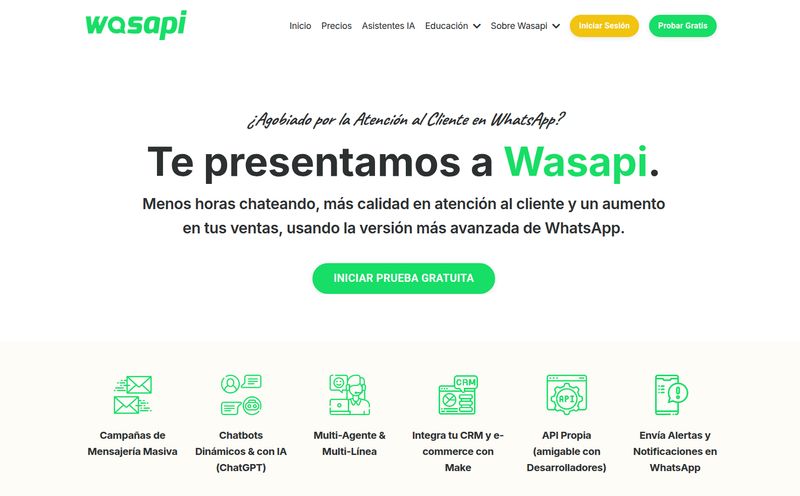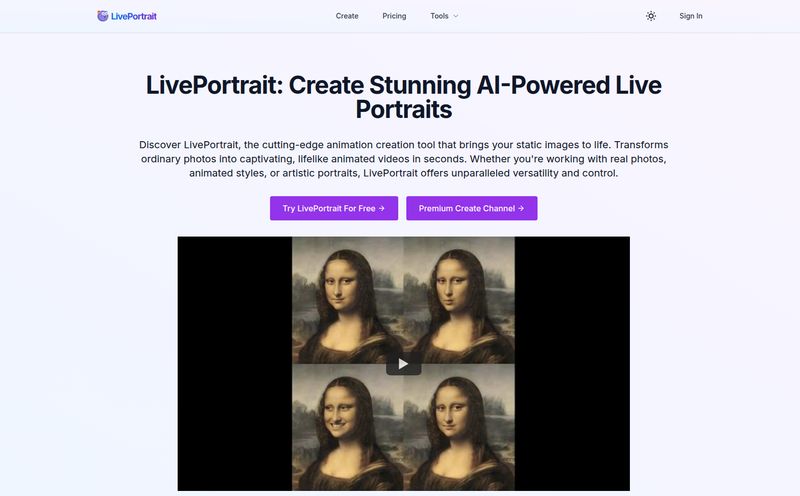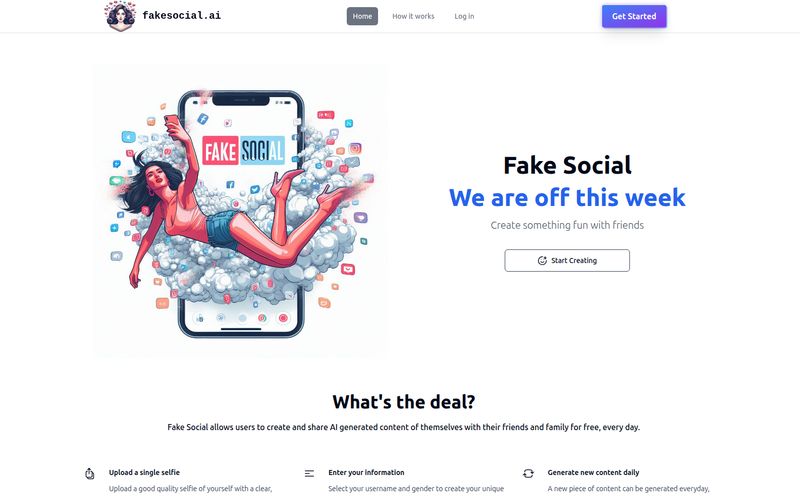As an SEO blogger, I’m constantly on the hunt for the next big thing. The new tool that's going to change our workflows, the platform that will make content creation a breeze. So, when I first heard whispers about Syntos AI, my interest was definitely piqued. A new text-to-image generator promising to be revolutionary, easy to use, and highly customizable. Sounds great, right? The kind of thing I love to get my hands on and review for you all.
So I did what any tech enthusiast would do. I brewed a fresh cup of coffee, cracked my knuckles, and navigated over to their website to take it for a spin. And I was greeted with… well, nothing. A big, fat error screen. A digital dead end.
This isn't your typical “404 Not Found.” This was a Cloudflare “Error 521: Web server is down.” A sign that the server on the other end, the very heart of Syntos AI, isn't talking back. It's like knocking on the door of a much-hyped new restaurant only to find the windows boarded up. What happened here? Is this a temporary glitch or a more permanent digital ghost story?
So, What Was Syntos AI Supposed to Be?
Before we get all Sherlock Holmes on this mystery, let's talk about the promise. Based on the information floating around, Syntos AI was designed to be an AI image generator that creates visuals from simple text prompts. You know the drill by now—we’ve all seen the incredible, and sometimes downright bizarre, images coming out of platforms like Midjourney and DALL-E 3.
Syntos AI was poised to enter that same ring. The idea was to help people visualize abstract concepts, create stunning artwork, or just generate a quick photorealistic image for a blog post, all by typing a few words. From what I gathered, it aimed to be a serious contender, focusing on translating text into visuals with a high degree of user control over the final output. Think style, content, color palettes—the whole shebang.
The Promised Land of Features
Every new tool lives and dies by its feature set. And Syntos AI’s sounded pretty solid, if not a little familiar.
Its core appeal was built on a few key pillars. First, image generation from text. This is the baseline, of course, but the quality and interpretation of those prompts are what separates the great from the mediocre. Second, deep customization. I’ve spent hours wrestling with prompts in other tools, adding phrases like “hyperrealistic, 8k, cinematic lighting” just to get something usable. Syntos AI supposedly offered more direct control over style and color, which could have been a huge time-saver. The ability to replicate various artistic styles—from painterly to pencil sketch to vaporwave—was also a big selling point. In a world saturated with generic-looking AI images, style versatility is everything.
And here’s a feature I was genuinely excited about: multi-language support. The AI space can feel very English-centric. Opening up powerful creative tools to a global audience is not just good business; it’s good for creativity as a whole. They also promised regular updates, which is always a good sign. It shows a commitment to growth and user feedback, something that can make or break a platform in this fast-moving field.
The Server Error That Stopped The Show
Alright, let’s get back to the elephant in the room. That glaring error screen. A Cloudflare 521 error isn't just a simple hiccup. As Cloudflare’s own documentation will tell you, it means their service could connect to the internet, but it couldn't get a response from the origin web server—the computer that actually hosts `syntos.ai`.

Visit Syntos AI
This could mean a few things. The server could have crashed and someone just needs to reboot it. Or, in a more dramatic scenario, the server might have been taken offline intentionally. Maybe they ran out of funding—running powerful AI models isn’t cheap. Perhaps they hit a major technical snag they couldn't solve. Or maybe, just maybe, they launched prematurely and pulled back to regroup. Whatever the reason, the result is the same: Syntos AI is currently a ghost ship.
The Good, The Bad, and The Unavailable
It feels a bit strange to talk about pros and cons for a tool I can't even access, but let's look at what we were told to expect.
What We Were Excited About
The biggest pro was its supposed ease of use. A lot of powerful AI tools have a steep learning curve. The idea of a platform that welcomes people with different technical skills is fantastic. The extensive customization and variety of artistic styles also fall squarely in the 'pro' column. As a content creator, I don't want all my images to have that same “AI sheen;” I want variety, and Syntos AI promised that.
Potential Hurdles (If It Ever Launches)
On the flip side, some of the anticipated cons are pretty standard for the course. The admission that it “can struggle with complex requests” is an honest one. All current-gen AIs have their limits, especially with things like accurately depicting human hands or understanding deeply nuanced prompts. The other big one is the need to adhere to copyright rules and platform policies. This is a minefield every AI company has to navigate, and it's a critical challenge for users who want to use images commercially. It’s a problem no one has perfectly solved yet.
What's the Price of a Ghost?
This brings us to the pricing. Or, the lack thereof. There was no pricing information available for Syntos AI, which only adds to the mystery. Was it going to be a subscription model like Midjourney? A credit-based system like those used by Adobe Firefly or Leonardo.ai? Or maybe a generous free tier to get users hooked? We may never know. This lack of a clear business model could be a clue. Perhaps the team couldn't figure out how to make it profitable, leading them to pull the plug before they even got started. It's a tough market out there.
So, Where Do We Go From Here?
While we wait to see if Syntos AI ever materializes, you and I still have content to create. The dream isn't dead, it just lives at a different address. If you're looking for a powerful and reliable AI image generator, you have plenty of amazing options:
- Midjourney: Still the king for many in terms of artistic quality, though it lives inside Discord which can be a little clunky for newcomers.
- DALL-E 3: Integrated directly into ChatGPT Plus, it's fantastic at understanding natural language prompts. If you can describe it, DALL-E 3 can probably create it.
- Stable Diffusion: The open-source powerhouse. It has a much steeper learning curve but offers unparalleled control if you're willing to get your hands dirty by running it on your own hardware or using a platform like DreamStudio.
- Leonardo.Ai: A really strong contender that started as a game asset generator but has blossomed into a full-featured image tool with a generous free tier.
Frequently Asked Questions about Syntos AI
What is Syntos AI?
Syntos AI was promoted as a text-to-image AI generator designed to create high-quality, customizable images from user prompts. It aimed to support multiple languages and various artistic styles.
Is Syntos AI available to use?
As of late 2024, the Syntos AI website is down and displaying a Cloudflare Error 521, which indicates its web server is not responding. The platform is currently inaccessible.
Was Syntos AI going to be free?
There was no public information regarding the pricing model for Syntos AI before its website went offline. It's unknown if it would have been a free, subscription-based, or credit-based service.
Why is the Syntos AI website down?
An Error 521 typically means the host server is offline. This could be due to a technical failure, the server being intentionally shut down, or other issues with the hosting provider. The exact reason for Syntos AI's downtime is not publicy known.
What are some good alternatives to Syntos AI?
Excellent alternatives for AI image generation include Midjourney (for artistic quality), DALL-E 3 (for ease of use via ChatGPT), Stable Diffusion (for open-source control), and Leonardo.Ai (for a great free tier and features).
A Cautionary Tale or Just a Tech Glitch?
So, we're left with a digital mystery. Syntos AI had all the makings of a promising new player in the AI image generation space. It had the right buzzwords, the right features, and the right idea. But for now, it's just a blank page on the internet. Maybe tomorrow it will flicker back to life, and this article will become obsolete. I kind of hope it does.
But it's also a stark reminder of how volatile the tech world can be. A great idea is one thing, but execution, funding, and infrastructure are what turn a dream into a real tool. For now, I'll keep my eye on that URL, hoping to see it come back. But I won't be holding my breath.



